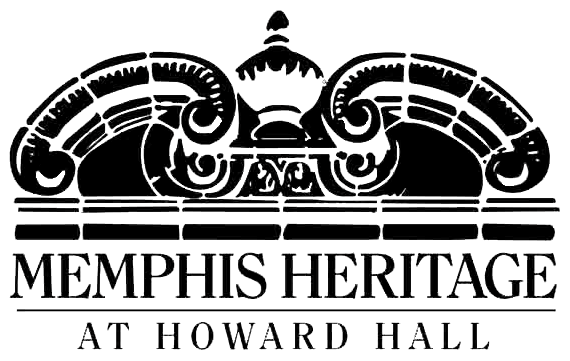Status: Preserved
Location: Beale Street between Second and Fourth Streets, Memphis
Built: 1870-1920
Architectural Style: Various
Original Function/Purpose: Commercial

History: In the early 1900s, Beale Street was the thoroughfare that divided South Memphis from Memphis. A diverse mix of Black-owned businesses developed, and by the 1920s Beale Street had reached a level of high prominence. Beale Street flourished musically and commercially especially from 1900 to 1949, and again beginning in 2000. Today Beale Street stands as one of Memphis’s biggest cultural and tourist attractions. The street is lined with, or next door to, an eclectic mix of commercial businesses, bars, churches and music venues, including the Orpheum Theatre, Clayborn Temple, and the FedEx Forum. Even before it was listed on the National Register, Beale Street Historic District was designated a National Historic Landmark on May 23, 1966. In 2018 a number of properties in the district were designated by the City of Memphis as sites on the Memphis Heritage Trail. Moreover, the street is lined with Beale Street Brass Notes honoring more than 170 talented people who “put Memphis Music and Beale Street on the world map.” Honorees include two dozen women, causing the street to be listed on the Memphis Women’s Legacy Trail. Early in 2020, the district was also added to the U.S. Civil Rights Trail.
Boundary Decrease
Status: In one two-block section, all buildings but one were demolished; that section was declared a boundary decrease as of April 11, 1989.
Location: Beale Street between Main and Second Streets
Built: 1870-1920
Architectural Style: Various

History: In June 1963, planners working with the Memphis Housing Authority suggested that several blocks of Beale Street could be closed and turned into a pedestrian mall. Space could be cleared at Main Street and Beale for a large new Memphis Light, Gas & Water building with associated plazas that would extend all the way east to Second Street. Second and Third Streets would either run over or under Beale. The MHA, with the help of limited federal funds, followed up with an early phase of its Beale Street Urban Renewal Project in June 1965. This resulted in the demolition of all historic buildings along Beale between Main and Second except for Lansky Brothers clothiers on the northwest corner of Beale and Second. At the same time, others were working to make Beale Street a National Historic Landmark and to list it on the National Register of Historic Places. These two aims were achieved in May and October 1966 respectively, although as said, historic buildings between Main and Second except for Lansky’s had already been razed or were about to be. Three years later an influx of $14 million of Federal Dept. of Housing and Urban Development funds revitalized and greatly expanded the Beale renewal project into surrounding neighborhoods. Left moderately intact amid the redevelopment of the following two decades was the section of Beale Street between Second and Fourth, although some buildings there had continued to deteriorate or be altered. A National Park Service report recommended in January 1987 that the district be stripped of its landmark status because so many of its historic characteristics had been lost. With Memphis Heritage assisting, subsequent agreements involving the City of Memphis, HUD, the National Park Service, the Tennessee Historical Commission and the district’s property managers Elkington and Keltner, allowed this remaining portion of the original historic district to retain its landmark status. The district also remained on the National Register following a Supplementary Listing Record acknowledging the loss of the Main to Second properties as a “boundary decrease.” The photo above is a glimpse of this section of Beale Street before the demolition. The source of the photo is the Memphis and Shelby County Room, Memphis Public Library & Information Center; the photo is identified as #6647NC 299 in their collection. This section was delisted on April 11, 1989.
Map:

Boundary Increase: Robert Church Park
Status: Approved July 29, 1993.
Location: Junction of Beale and Fourth Streets
Built: 1899, with later additions
Architectural Style: Park
Original Function/Purpose: Park

History: The boundary of Beale Street Historic District was increased by the addition of Robert R. Church Park, once the center of cultural activities for African-Americans in Memphis. Founded in 1899 by Robert Reed Church, Sr., the park had an auditorium, picnic grounds, bandstand and playground, and surrounds the NR-listed First Baptist Church (Beale Street). The first NAACP branch in Tennessee was organized here in 1917 and W.C. Handy directed an orchestra here. After Church’s death in 1912 the park was managed by his son Robert R. Church, Jr., an influential leader in the Republican party. In 1941 the Walter Chandler administration changed the park’s name to Beale Avenue Park, but the original name was rightly restored in 1956 and the park has since been extensively refurbished. It contains a number of historical markers commemorating the significance of this site. . In 2018 the City of Memphis designated this property as a site on the Memphis Heritage Trail. A statue of investigative journalist and early civil rights leader Ida B. Wells was unveiled on the southeast corner of Beale and Fourth Streets in July 2021; it is now the centerpiece of the also recently-created Ida B. Wells Plaza. A fundraising effort was started in July 2022 to raise $300,000 for further improvements to the plaza.
Map:

City Council District: 6
Super District: 8
County Commission District: 8
